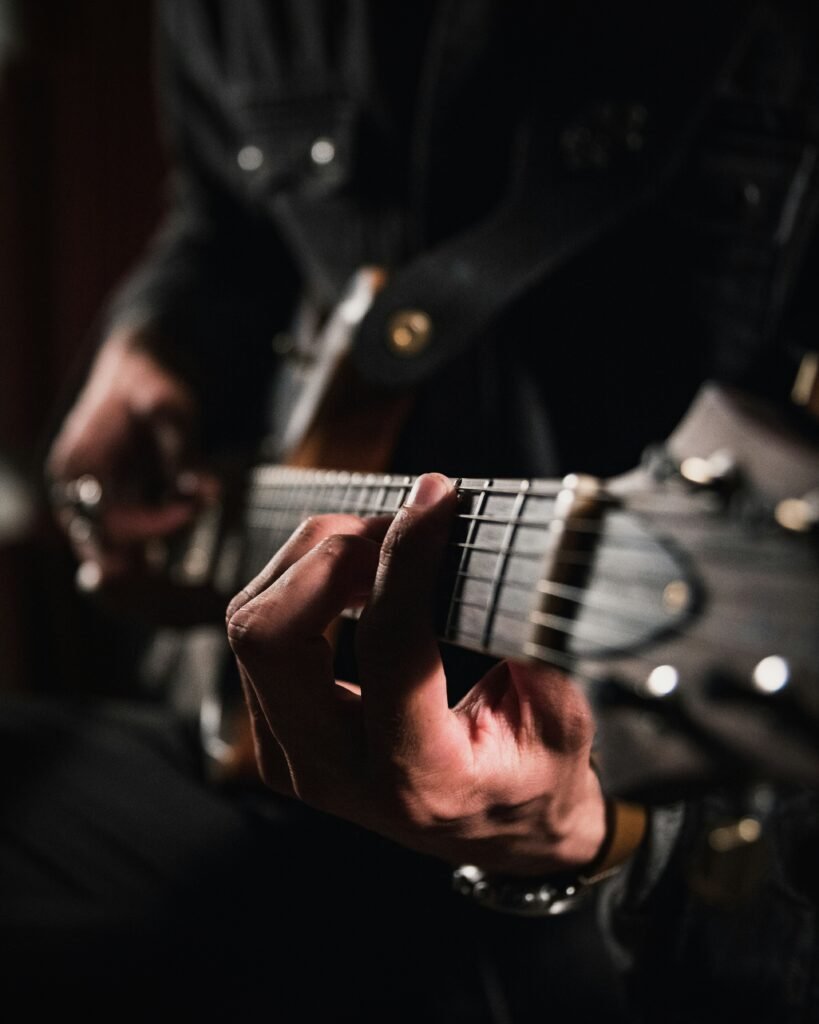When people think of iconic guitarists, they often imagine electrifying solos and dazzling technical displays. However, one of the most crucial and sometimes underappreciated roles in any band is that of the rhythm guitarist. The rhythm guitar is the backbone of a band, providing the essential foundation upon which the music is built. Let’s delve into the critical role of the rhythm guitar and why it’s indispensable for any successful band.
Establishing the Groove
The primary function of the rhythm guitar is to establish and maintain the groove of a song. This involves playing chords and riffs that support the harmonic structure and rhythm. The rhythm guitarist works closely with the drummer and bassist to create a tight, cohesive rhythm section. This synergy is what gets people moving on the dance floor and gives a song its drive and energy. Without a solid rhythm guitar, a band can sound disjointed and lack the necessary groove to keep listeners engaged.
Harmonic Foundation
Rhythm guitar provides the harmonic foundation of a band’s music. By playing chords and progressions, the rhythm guitarist sets the tonal framework within which the lead guitarist, vocalist, and other instrumentalists operate. This harmonic bedrock is crucial for defining the mood and emotional tone of a song. For example, the jangly chords of rhythm guitar in The Beatles’ “A Hard Day’s Night” create an upbeat and lively feel, while the dark, brooding riffs in Black Sabbath’s “Iron Man” set a heavy, ominous tone.
Supporting the Lead Guitar
While the lead guitarist often takes the spotlight with solos and melodies, the rhythm guitarist plays a supportive yet vital role. During solos, the rhythm guitar ensures that the harmonic and rhythmic continuity of the song is maintained. This allows the lead guitarist to improvise and explore musical ideas without the song losing its structure. In bands like Guns N’ Roses, Izzy Stradlin’s rhythm work underpins Slash’s soaring solos, creating a perfect balance between lead and rhythm elements.
Enhancing Dynamics and Texture
The rhythm guitarist has a significant impact on the dynamics and texture of a song. By varying strumming patterns, picking techniques, and chord voicings, the rhythm guitar can add depth and richness to the music. Techniques such as palm muting, arpeggios, and syncopated strumming can change the texture and feel of a song, making it more interesting and dynamic. For instance, the clean, arpeggiated chords in Red Hot Chili Peppers’ “Under the Bridge” provide a delicate texture that contrasts with the song’s more powerful sections.
Versatility and Adaptability
Rhythm guitarists often need to be versatile and adaptable, capable of playing in various styles and genres. Whether it’s the intricate chord progressions of jazz, the driving power chords of punk rock, or the syncopated rhythms of funk, the rhythm guitarist must be able to adjust their playing to suit the band’s needs. This versatility not only enhances the band’s overall sound but also allows the rhythm guitarist to contribute creatively to the music’s development.
Examples of Iconic Rhythm Guitarists
Some of the most celebrated guitarists in music history are known for their exceptional rhythm playing. Keith Richards of The Rolling Stones, Malcolm Young of AC/DC, and James Hetfield of Metallica are all examples of rhythm guitarists who have defined the sound of their bands. Their ability to craft memorable riffs and maintain impeccable timing has been crucial to their band’s success and longevity.
Conclusion
The role of the rhythm guitar in a band cannot be overstated. It is the glue that holds the music together, providing the essential groove, harmonic foundation, and dynamic texture that define a band’s sound. A great rhythm guitarist enhances the music’s depth and complexity, ensuring that the lead instruments can shine while maintaining the song’s structure and drive. In essence, the rhythm guitar is the heart of a band, and mastering this role is key to becoming a well-rounded and impactful guitarist.
By understanding and appreciating the critical role of rhythm guitar, aspiring musicians can develop a deeper respect for the instrument and its contributions to the overall sound of a band. Whether you’re strumming chords in the background or driving the groove with tight riffs, the rhythm guitar is indispensable in creating music that moves and inspires.









